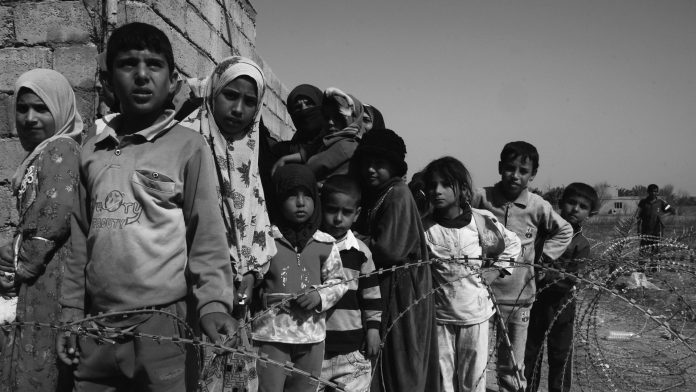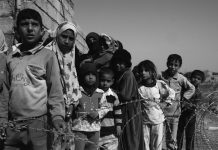This article is written by Srishti Sinha, from the Institute of Law, Nirma University, Ahmedabad. This article deals with International Humanitarian Law and its role in the protection of women and children during armed conflicts.
Table of Contents
Introduction
The law that governs the conduct of war is known as International Humanitarian Law (IHL), often known as the rules of armed conflict. It is a branch of international law that aims to reduce the impact of armed conflict by safeguarding civilians and restricting and regulating the weapons and tactics of warfare accessible to combatants. International Human Law comprises a set of rules, established by treaty or custom, that seeks to protect persons and property/objects that are, or maybe, affected by armed conflict and limits the rights of parties to a conflict to use methods and means of warfare of their choice. International Humanitarian Law (IHL) aims to protect the injured, ill, prisoners of war, and civilians who are in enemy hands. War isn’t only a man’s domain. The effects of war on women and children may be severe in today’s wars. Regardless of whether they are civilians or soldiers, women endure systemic disadvantages as a result of gender inequality, which tends to worsen during armed conflicts. IHL requires parties to a conflict to preserve the civilian population’s health, economic security, and physical safety. When they fail, women and children are generally the ones who suffer the repercussions.
Armed conflicts – human rights going down the tubes
An armed conflict is defined as “a political war in which the armed forces of at least one state (or one or more armed groups aiming to acquire control of all or part of the state) engage in armed combat and at least 1,000 people are killed as a result of the fighting”.
Human rights are frequently violated during military conflicts. As a result, specialists have spent a lot of time over the years developing tools targeted at reducing human suffering during war and conflict. Human rights law, refugee law, and humanitarian law are three aspects of modern international law that try to give protection to war victims. In the armed conflict, the humanitarian law applies, limiting the acts of warring parties and ensuring the protection and decent treatment of those who are not taking part or cannot take part in the hostilities.
Human rights, war, and conflict may all be traced back to conflict analysis, since human rights breaches may be both the cause and the result of the conflict. Gripes over the denial or apparent denial of rights can lead to social strife in the broadest sense. This might be the situation when people are treated unfairly because of their race, ethnicity, caste, religion, language, gender, or other qualities. Human rights violations can also occur as a result of violent conflict. Human rights have the power to change conflicts and make their settlement more difficult. As a result, wars that begin when disputes over resources, religion, ethnic or territorial claims may evolve into new grievances as one or more parties to the conflict violate human rights in actual or perceived ways.
Role of International Humanitarian Law in protecting women and children
Wars are no longer waged on isolated battlegrounds; instead, they are waged in the middle of civilian populations. Civilians, not fighters, account for the majority of casualties, and women and children are particularly vulnerable and abused among civilians. Food supply, production, health services, transportation, water, and fuel are all disrupted by war.
Role of International Humanitarian Law in the protection of women
Without discrimination based on gender, international humanitarian law tries to prevent and alleviate human suffering in times of conflict. It does, however, acknowledge that women suffer unique challenges in an armed conflict, such as sexual assaults and health dangers. War is not between two parties rather its impact can affect the whole civilian community. Fighting has a significant influence on women in today’s wars. Humanitarian law recognizes this in the broad protection it provides to both men and women, as well as in certain particular provisions that provide women with particular protection.
IHL demands that the injured and ill, as well as captives and civilians, caught up in a battle, be treated humanely, with no “adverse distinction” based on sex, ethnicity, nationality, religion, political beliefs, or other factors. The four Geneva Conventions (1949) and their Additional Protocols (1977), as well as customary humanitarian law, give this broad protection. There are also special safeguards in place for female prisoners of war, such as the establishment of separate holding rooms for female captives. Rape and other types of sexual assault against women are expressly prohibited under international humanitarian law, and all of them may be considered war crimes. Furthermore, the requirements of expecting mothers and mothers with small children, particularly nursing moms, who require specific attention, must be met. Also, women whose lives have been impacted by armed conflict must be examined well.
During and after an armed conflict, women are more vulnerable to family separation and the pain caused by the unknown fate of a lost relative. Families have the right to know what happened to their lost relatives under humanitarian law, and parties to armed conflicts are obligated to take all reasonable steps to locate anybody reported missing.
Role of International Humanitarian Law in the protection of children
In armed conflicts, children are particularly vulnerable. Even though they are protected by the law, armed forces and armed organizations continue to recruit them. They are frequently separated from their families, forcibly removed from their homes, murdered, wounded, sexually assaulted, or exploited in various ways. As civilians or combatants, children in conflict enjoy the universal protection of international humanitarian law. However, some measures acknowledge their unique vulnerability and requirements during armed situations. There are various situations in which children take part in wars and conflicts but they are also in support duties, such as transporting supplies or supplying military information, putting them in grave danger but the additional protocols of the Geneva Convention were the first treaty to provide some rules to tackle such situations. The rules make it illegal for children under the age of 15 to be recruited or participate in hostilities. The first Additional Protocol also mandates military recruitment of 15 to 18-year-olds to be prioritized in international armed conflicts. The 15-year-old age restriction was incorporated in the 1989 Convention on the Rights of the Child, which has near-universal approval. In May 2000, an optional protocol to this Convention raised the required recruitment age to 18 and urged States to raise the minimum age for voluntary recruitment to at least 15. Armed organizations should not utilize minors under the age of 18 under any circumstances, it said, and states should make such acts illegal.
Children who are not participating in an armed conflict confront a variety of threats against which IHL and associated children’s rights provisions offer specific protection. They are given non-combatant protection in general, but the Geneva Conventions and 1977 Protocols acknowledge their unique needs for medical assistance, food, housing, and clothing. Orphaned or separated children must be found, safeguarded, and given particular facilities to assure their physical protection. Their educational requirements must also be met. Simultaneously, all necessary actions must be done to enable the reunification of families who have been separated for a while.
The International Humanitarian Law (IHL) strives to reduce the effects of conflict on children. Regrettably, the nature of today’s wars necessitates even more on-the-ground efforts to protect children from the horrors of war and to assist them in rebuilding their lives after the battle is over.
The mental trauma that affects people for years to come
The impact of war on the mental health of civilians is one of the most severe effects of conflict. Mental problems are becoming more prevalent among the general population, according to studies. Women are impacted more than males. Children, the elderly, and the crippled are among the other vulnerable categories. The degree of trauma and the availability of physical and emotional assistance is linked to prevalence rates. War damages communities and families, and it frequently interrupts the social and economic growth of nations. Long-term physical and psychological injury to children and adults, as well as a decline in material and human capital, are all consequences of conflict. In the conflicts, death is just the tip of an iceberg but the real iceberg includes poverty, malnutrition, disability, economic/ social decline, and psychosocial illness.
Women are the primary child caregivers, when they are affected by war, so are children. Whether directly or indirectly, children are always the first ones to be affected by armed conflicts. Traumatic experiences and violent battles can cause a variety of mental problems or symptoms in children, including Posttraumatic Stress Disorder (PTSD). Children who are exposed to the negative repercussions of circumstances like war and warfare are known to experience sentiments of fear and desperation. Regressing to previous stages of development in younger children is also common. Trauma-related issues in children might result in impairment or loss of function. Children who are exposed to battle, whether directly or indirectly, are exposed to a variety of stressors and demonstrate both short-term and long-term posttraumatic stress responses. Sadness, fear, numbness, nervousness or timidness, moodiness or nervousness, changes in appetite, difficulties sleeping, nightmares, avoidance of circumstances that remind them of trauma, concentration issues, and guilt are all frequent symptoms and reactions following a traumatic experience.
Conclusion
Armed conflict is a situation where a person’s life is completely changed. Their legal, as well as human rights, are violated to a great extent. Women and children are badly affected by this conflict because men of their families are out for war and they have to manage everything. This situation is not easy, it creates a mental trauma that affects them for years. International Humanitarian Law is such a rule which protects those people (especially women and children) who are not directly involved in the war but are affected by it. There are various conventions and protocols which are added in IHL for the protection of these vulnerable categories but sadly the nature of war in today’s world has changed and so it is required to make more efforts to protect the vulnerable categories.
References
- https://www.redcross.ca/blog/2019/11/how-does-international-humanitarian-law-protect-women-during-war
- https://www.icrc.org/en/doc/war-and-law/protected-persons/children/overview-protected-children.htm
- https://www.ncbi.nlm.nih.gov/pmc/articles/PMC1472271/
- https://www.indianjpsychiatry.org/article.asp?issn=0019-5545;year=2019;volume=61;issue=5;spage=496;epage=502;aulast=Eyuboglu
LawSikho has created a telegram group for exchanging legal knowledge, referrals, and various opportunities. You can click on this link and join:
 Serato DJ Crack 2025Serato DJ PRO Crack
Serato DJ Crack 2025Serato DJ PRO Crack











 Allow notifications
Allow notifications



